
FIND YOUR SERENITY AT THE SYMPHONY

If you do not wish to take this program home, please drop it in the bin on your way out tonight! Relax. Recharge. Restore. then Reduce. Reuse. Recycle.
-Johannes Brahms






















FIND YOUR SERENITY AT THE SYMPHONY

If you do not wish to take this program home, please drop it in the bin on your way out tonight! Relax. Recharge. Restore. then Reduce. Reuse. Recycle.
-Johannes Brahms




















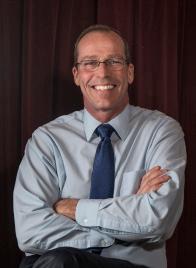
Do you find serenity at the symphony? Does a night at the symphony help you relax, recharge, and restore? Do you think of us as your symphony?
Whether you come for the escape, the inspiration, or simply the joy of experiencing something beautiful, we’re honored to be part of your life.
But there is a good chance you know people who don’t realize that this is the effect a symphony concert has on a person. Instead, they might think of themselves as just not being a “symphony person” or that they need some kind of insider knowledge about the music to enjoy it. I can understand why people think that, but I also think it is completely wrong!
So if you know someone who could use a little relaxing, recharging, or restoring, why not share with them why you go to symphony? Tell them what you experience at our concerts, and what makes a symphony night special to you. If you are like me, a symphony concert isn’t only about the music, it’s about what the music does to you and for you.
By sharing the serenity and inspiration you find at the New Bedford Symphony, you are helping people you care about and you will be helping us create an even more vibrant and connected symphony community.
We look forward to welcoming your friends and family into our musical family!

David M. Prentiss NBSO President and CEO
Yaniv Dinur is the winner of the 2019 Sir Georg Solti Conducting Fellow Award and Music Director of the New Bedford Symphony Orchestra. He is lauded for his insightful interpretations and unique ability to connect with concertgoers of all ages and backgrounds, from season subscribers to symphony newcomers.
Season 24/25 marks the beginning of Dinur’s third contract with New Bedford Symphony and his eighth season as music director. Under his leadership, the New Bedford Symphony has been nationally recognized for its bold, engaging programming and artistic quality, leading to the League of American Orchestras selecting the orchestra to perform at the 2021 League Conference. Dinur recently concluded a successful tenure as Resident Conductor of the Milwaukee Symphony Orchestra, during which he conducted hundreds of concerts. Recognizing his leadership and impact, the Milwaukee Business Journal selected him as a 40 Under 40 honoree, an award for young professionals making a difference in the community.
Yaniv Dinur made his conducting debut at the age of 19 with the National Symphony Orchestra of Ireland, which led to multiple return engagements. Since then, he has conducted orchestras around the world, including the Israel Philharmonic, Jerusalem Symphony, Houston Symphony, Fort Worth Symphony, Louisiana Philharmonic, Detroit Symphony, New World Symphony, San Antonio Symphony, Portugal Symphony Orchestra, Sofia Festival Orchestra/Bulgaria, State Orchestra of St. Petersburg, Torino Philharmonic, and the National Arts Centre Orchestra in Ottawa. Recent and upcoming guest conducting highlights include subscription debuts with the Rochester Philharmonic, Orchestra Filarmonica de Madrid, New Hampshire Music Festival, Boca Raton Music Festival, Edmonton Symphony, and Present Music in Milwaukee, and returns to the Milwaukee, Tulsa and Tallahassee Symphony Orchestras. Dinur has collaborated with world-renowned soloists such as Pinchas Zukerman, Yefim Bronfman, Itzhak Perlman, Karen Gomyo, Vadim Gluzman, and Augustin Hadelich.
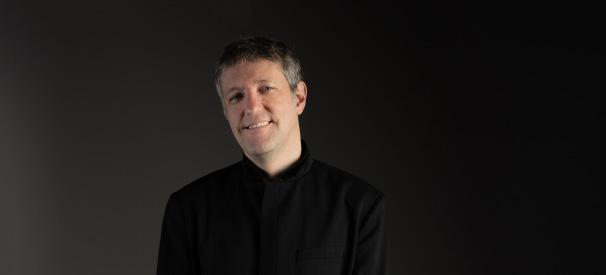
Dinur is the winner of numerous awards, among them the 2017 and 2016 Solti Foundation U.S. Career Assistance Awards, 2nd Prize at the 2009 Mata International Conducting Competition in Mexico, and the Yuri Ahronovitch 1st Prize in the 2005 Aviv Conducting Competition in Israel. He is also a recipient of the America-Israel Cultural Foundation and the Zubin Mehta Scholarship Endowment.
A passionate chamber music performer, Dinur is the founder and artistic director of the Winterlude chamber music series at the Villa Terrace Museum in Milwaukee, as well as the Milwaukee Summer Chamber Music Festival at the Charles Allis Art Museum, where he performs with musicians from the Milwaukee Symphony.
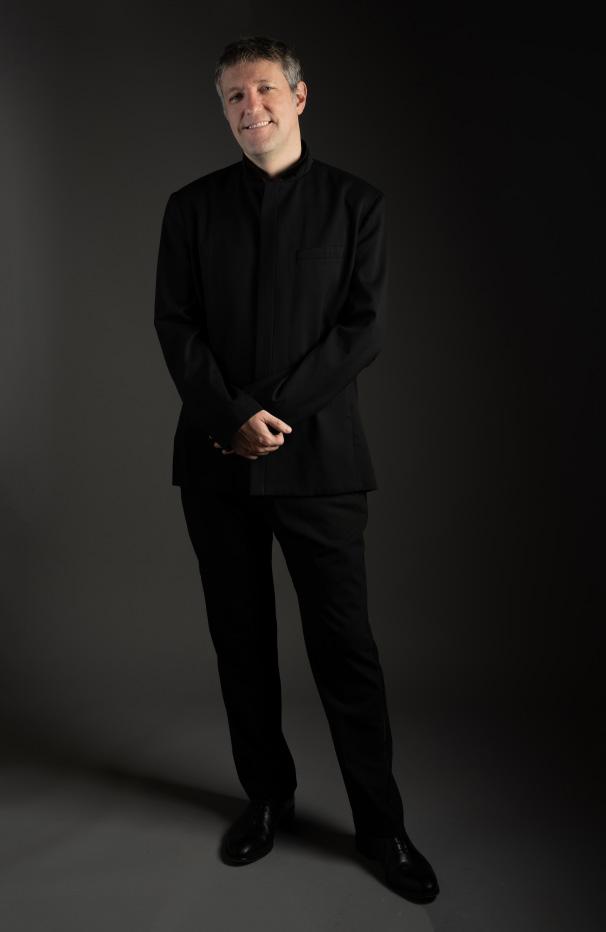
Born in Jerusalem, Dinur began studying the piano at the age of six with his aunt, Olga Shachar, and later with Prof. Alexander Tamir, Tatiana Alexanderov, Mark Dukelsky, and Edna Golandsky. He studied conducing in Israel with Dr. Evgeny Zirlin and Prof. Mendi Rodan, and holds a Doctorate in Orchestral Conducting from the University of Michigan School of Music, Theatre & Dance, where he was a student of Prof. Kenneth Kiesler. 24-25



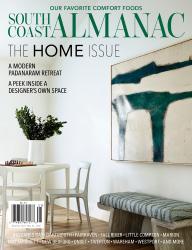



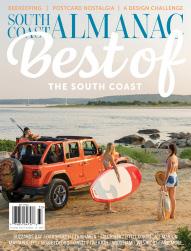
Don‘t miss a single issue!
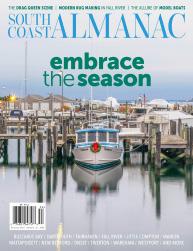
Become a subsciber today.


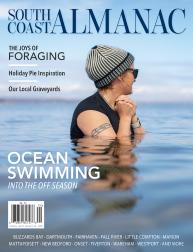


Yaniv Dinur, Music Director
Violin I
Jesse Holstein, Concertmaster
Ethan Wood, Assistant Concertmaster
Dr. Clinton Levin Memorial Chair
Ealain McMullin
Open
Jennifer Memoli
Kyra Davies
Melody Albanese Kelly
Linda Scenna
Theo Ramsey
Emma K. Powell
Violin II
EmmaLee Holmes-Hicks, Principal
Geoff and Judy Swett Chair
David Rubin
Nozomi Murayama
Fariba Hunold
Raluca Dumitrache
Sophia Bernitz
Adam Jeffreys
Jiuri Yu
Yeonji Shim
Open
Viola
Anna Griffis, Principal
George Grimshaw Memorial Chair
Chris Nunn
Elisa Birdseye
Rebecca Hallowell
Maureen Heflinger
Sofia Nikas
Sachin Shukla
Sam Kelder
Cello
Leo Eguchi, Principal
Patricia Plum Wylde Chair
Shay Rudolph*
Pamela M. Hoffer Memorial Chair, endowed in perpetuity
Peter Zay
Bonnie Harlow
Stefan Gabriel
Fabrizio Mazzetta
Backkyoung Cho
Open
Bass
Pete Walsh, Principal
Irene Gudewicz Memorial Chair
Bebo Shiu
Nathan Varga
Kiefer Fuller
Open
Flute
Timothy Macri, Principal
Josef N. Cobert Memorial Chair, endowed in perpetuity
Vanessa Holroyd
Heather Parsons and Andrew Kotsatos Chair, endowed in perpetuity
Oboe
Laura Shamu, Principal
Nancy and Jack Braitmayer Chair, endowed in perpetuity
Laura Pardee Schaefer
Kathy Wattles Chair
Clarinet
Nicholas Brown, Principal
Charles Parsons Memorial Chair
Margo McGowan
* On leave
Music Director Sponsors: Allan and Priscilla Ditchfield, Susan and Dexter Mead The orchestra roster is subject to change. Individual concert rosters will be posted on the concert pages at nbsymphony.org prior to each concert.
Bassoon
Michael Mechanic, Principal
Janet and Bill Coquillette Chair
Rachel Juszczak
Horn
Michael Bellofatto, Principal
Dorothy Malone and Rhoda Gayle Memorial Chair
Paulina Aguirre
Cile and Bill Hicks Chair, endowed in perpetuity
Nick Auer Open
Trumpet
Andrew Sorg, Principal
Open
Geoff Shamu
Trombone
Seth Budahl, Principal
Albert J. Lamoureux Memorial Chair
Robert Hoveland*
James Monaghan
Tuba Open
Timpani
Eric Huber, Principal
Ann and Hans Ziegler Chair, endowed in perpetuity
Percussion
Evan Glickman†, Principal
Dylan Barber
Harp
Maria Spraker
Keyboard
Pei-yeh Tsai, Principal
Sandra Bilodeau Chair
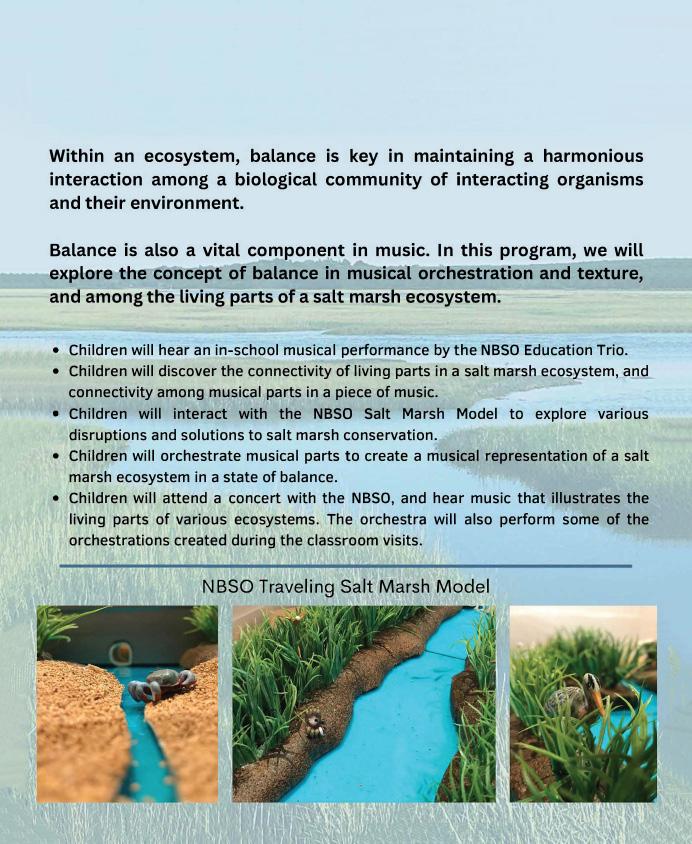

Terry Wolkowicz, Education Director
Learning in Concert is an in-school partnership program with the NBSO and over forty local elementary schools. It uses a concept-based arts integration model where a musical concept is explored alongside other art and academic areas that authentically share the same concept. The Learning in Concert program is designed as a unified, comprehensive, three-phase curriculum project spanning an entire school year. The curriculum for the 2024-25 school year explores the concept of balance in orchestration and texture, and balance in the living parts of an ecosystem.
The Pre-K Music and Literacy program is a program based on the NBSO’s children’s book entitled, “A Concert at the Zoo” written by David MacKenzie, Dave Prentiss, and Terry Wolkowicz and illustrated by Olivia Coucci. Throughout the story, an animal name is linked to an instrument name that shares the same number of syllables and the same syllable stress patterns. Dr. MacKenzie composed a piece for Cello and Narrator that incorporates elements of word stress and intonation into the musical structure allowing the musical instrument to “speak” the text. During the classroom visits, the students practice speaking and drumming the animal/instrument rhythmic word patterns.
The NBSO also launched a new music program with the New Bedford High School Parenting Teens program where students met each week with Education Director Terry Wolkowicz to learn how to compose music that can be used for their child’s nightly bedtime routine.
The K-12 Music Keyword Equity Database is a new, free online database created for music educators to help them find music listening examples by BIPOC composers to be used in class. The database allows teachers to search using a specific music theory term, compositional technique, or musical element that is planned for an upcoming lesson. To learn more, or to explore the database yourself, visit www.equity.nbsymphony.org.
The Southeastern Massachusetts Youth Orchestras (SEMAYO) provide orchestral training and performance opportunities for young musicians up to age 21 in an educational environment in which they learn from professional musicians and one another.
Finally, the NBSO is continuing with its Pathway to Performance program where New Bedford Public School students receive scholarships to fund weekly, free, private music lessons.
The NBSO expresses its deep appreciation to all who support our concerts, educational programs and community outreach. Donations of $100 or more received between September 1, 2023 and August 31, 2024 are listed below.
$100,000+
Anonymous
$25,000+
Howard and Fredericka Stevenson
A Friend of NBSO
$10,000+
Baldwin Wealth Partners
Tom Barry and Nancy Shanik
Nancy Braitmayer
Ralph Eustis, in memory of Merry Eustis
Wendy and Ken Joblon
Sara H. Johnston
Andy Kotsatos and Heather Parsons
Dexter and Susan Mead
John Newton and Janice Weber
Sandria Parsons
Margaret-Ann Rice
Geoff and Judy Swett
Ann and Hans Ziegler
$5,000+
Bristol County Savings Bank
Janet and Bill Coquillette
Drs. James T. Griffith and Susan J. Leclair
Cile and Bill Hicks
Lilian Kemp and David Marks
Paul and Denise Lamoureux
Wayne Matelski
Diana Nichols
Harry and Pam Norweb
Jane and Neil Pappalardo
Margaret-Ann Rice, in memory of Clifton V. Rice
Barry and Meg Steinberg
Margot Stone
Vineyard Wind
Richard and Patricia Wecker
Drs. Laima and Bert Zarins
$2,500+
Albert Fox Facial Plastic Surgery Center
Joel and Lisa Alvord
Christina Bascom
Jan and Chuck Bichsel
Sandra Bilodeau
Mary Jean and Bill Blasdale
Lizanne and Malcolm Campbell, in honor of Yaniv Dinur and the wonderful NBSO musicians
Helen DeGroot
Jim and Carol Dildine
Michael Esposito and Cynthia Redel
Fiber Optic Center, Inc.
Elsie R. Fraga
Richard and Sharon Grahn
Hawthorn Medical Associates
Dr. Edward Hoffer and Madeleine
Deschamps Hoffer
Nan Johnson and Alan Minard
LandVest
Frances Levin
Ken Lipman
Michael Malone and Debra Gayle
Susan Eldredge Mead
Joop and Ria Nagtegaal
Ed Ottensmeyer and Anne Donnellon
Richard Pline and Roseann
Radosevich
Karen and Jim Prieur
Jamey and Laura Shachoy
Shepard Turf Management, Inc.
South Coast Almanac
Rachael Kolb and Thomas Stritter
C. Winfield and Winifred B. Swarr
The Symphony Shop
The Tow Foundation Inc., in honor of David Tobias
Kathy Wattles
Whaling City Sound
A supporter of NBSO
$1,000+
Milton and Marilyn Adams
Pat and John Baillieul
Hope Lincoln Baker
Douglas Balder and Joan DeCollibus
Michael and Margie Baldwin
Bianca and Michael Bator
Charlotte Berman
Ellen and Tom Bowler
Edward C. and Elizabeth H. Brainard
Joel Brenner and Victoria Pope
Irene and Norman Buck
Rid Bullerjahn
Dr. Peter Campisano and Joyce Tower
Betty Ann and Jack Cannell
David Cole and Betty Slade, in memory of Robert Harding
James Conlin and Carole Ferguson
Sheila Powers Converse
Douglas and Cindy Crocker
James and Edwina Cronin
Andrea and Emmanuel Daskalakis
Michael K. Davis
John and Zelinda Douhan
Jeffrey Dover and Tania Phillips, in honor of Ed Ottensmeyer and Ann Donnellon
Breck and Jeanne Eagle
Randall Elgin and Mark Whalen
Tom and Barbara Farquhar
Jim and Margaret Forbush
Drs. Albert and Cynthia Fox
Suzanne and George Gebelein
The Gladstone Family Fund
Marjorie and Nick Greville
Philip Guymont and Susan McLaren
Tom and Ava Hallam
Jack and Leslie Howard
Gary P. Johnson and Luana Josvold
David and Jen Kaiser
Betsy and Rusty Kellogg
Trudy Kingery
Diane and Peter Lafond
Dr. Raina and Stephen Lamade
Scott and Monica Laurans
John and Doris Ludes
Drs. Alvin and Andrea Marcovici
Holly and Joe McDonough
Joe Nauman
Connie Nelson
Mr. and Mrs. Terry Reideler
Donald and Genie Rice
Kitt and Heather Sawitsky
Robert B. Smith
Southcoast Health
Jane Ross Stankiewicz and Mark Southworth
Maryellen and James S. Hughes
Richard Tabors and Mary Ellen Lees
Joan Underwood and Geoffrey Taylor
Rhonda and Roy Veugen
Henry and Marion Wainer, in honor of Terry Wolkowicz
Marge Waite and Neal Weiss
John and Mallory Waterman
R. Davis Webb, Jr. and Jennifer W.
Webb
Janet Whitla
Vincent Mor and Margaret S. Wool
Grace and David Wyss
Dr. and Mrs. Edward A. Zane
Anonymous
$500+
David and Laurie Barrett
Ana and Dudley Bauerlein
Virginia and Myles Boone
Russell and Lorraine Carey
Kathleen and Gregory Clear
Kathleen and Gregory Clear, in honor of Sally Johnston
Dwight and Loretto Crane
Robert Darnton
Bob and Sue Daylor
Robert and Patricia DeAngelis
Tommie and Jack Desmond
Kathy Dinneen
Janet and Bob Feingold
Feingold Bonnet-Hébert, P.C.
Marie L. Fontaine, in memory of Doris and Fred Basel
Barbara and Brad Fouss, in honor of Ann and Hans Ziegler
Karen M. and George Gardner
John and Gretchen Graef
Drs. James T. Griffith and Susan J. Leclair, in memory of Ruth Prentiss
Robert and Cynthia Hamburger, in honor of Bob Booth and the good work the NBSYO does!
Jim Harrison
Elizabeth Huidekoper
Nicholas and Susan Iwanisziw
Helen and Ray Killian
Edward and Nancy Kurtz
Edith Lauderdale
Jane Loos
Jean MacCormack
Patricia Marshall
Marilyn and Raymond Melanson
Morningstar Family
Ed and Anne Motley
Peter Necheles and Marlissa Briggett
John and Victor Pinheiro - Luzo Auto Center
William Prescott
Cecilia and Chris Ross
Christopher Saulnier
David and Patricia Straus
Elaine and Geoff Swaebe
William Tifft and Ellen Bruzelius
Bob Trahan and Denyse Conrad
Richard and Barbara van Inwegen
Henry and Marion Wainer
Greg Wallace, in honor of Janet and Vern Wallace
David and Betty Watson, in memory of Mrs. Helen T. Mills
Anne Whitney
Robin Worcester
Anonymous
$250+
Dana Anderson
Chris and Trish Arnold
Jack Boesen and Janne Hellgren, in memory of Thelma Kramer Ostenfeld
Dan and Jennifer Bungert
Gloria Clark
Bill Clements
David and Kate Fentress
Anne and John Gorczyca
Jane Goulet
Patricia and Duncan Gratton
Maryann Hayes
Sandra S. Hewitt
Lesley Hill and Alan Stone
Ellen Hocker
Elizabeth Isherwood-Moore
Mark and Nancy Keighley
The Kemp Family, in memory of Dr. Charles Parsons
Mary Ellen Kennedy
Audrey G. Knapp
Mr. and Mrs. Scott Lang
Sasha Lauterbach and Peter Sturges
Sasha Lauterbach and Peter Sturges, in honor of Sally Johnston
Sarah Lederman
Elizabeth Lufkin
Robert and Carolyn Lytle
James and Corinne Marlow
Jayne Abbott Mucciarone
Norma M. Olivier
Maura and Brian Packham, in honor of Yaniv Dinur
Gisele Pappas
Geraldine Perry-Lopes
Larry and Jackie Philla
Kathy Reed
The Rhode Island Foundation, Anonymous
Michael Rocha, MD
Susan C. Schenker Family Charitable Giving Fund
Ann Silva
Louis and Arlene Silverstein
John and Eileen Sorrentino
Judith and Kristian Stoltenberg
June and William Swanson
Dan Calano and Kate Thompson
Mary L. Tomlinson
Sarah Bucknell Treco
Anna Whitcomb and Samuel Knight
Marjorie Williams and Michael Tushman, in honor of Sandra Hebert
Ali Woodruff and Barrett Levenson
Diana M. Worley
Anonymous
$100+
Meg and Bob Ackerman
Thomas Anders and Constance Bowe
Peg Bacon
Taylor Baldwin
Carol and Brien Barnewolt
Tessa and Jack Belkin
Arthur Bennett
Molly Bernard
Diane Altman Berube, in honor of David J. Langevin
Christina and Ron Biron
Nina Blumenthal and Scott Corin
Bettina Borders and Victor Mailey
Bonnie L. Bower, in memory of Mark Hosley, MD, PhD
John and Jennifer Brindisi
Deborah Persons Brooke
Camilla Brooks and Margaret Egan
Carol Brown
Patricia and Richard Burke
Karen Burmood
Virginia Callas
Charles F. Carlstrom
Prof. Chi Hau Chen
James and Shauna Chen
Bob Clancy and Kathi Rogers
Penny Cole
Nelson Coluzzi
James and Carol Constantine
Natalie Costa-Marron
Michael Couture and Diane Brown-Couture
Michael and Jennifer Coye
Evelyn Crocker
Wendy and Ray Cullum
Walter J. Czerny, Jr.
Judith R. Davis
Sheila-Rae and Karl Dlugosinski
John and Mary Beth Dowd
Ben Dunham and Wendy Rolfe-Dunham
Deborah and David Ehrens, in memory of Myra Besen
Tobey Eugenio
Helga Faulenbach
Kathy and Jim Feeney
Feingold Bonnet-Hébert, P.C., in memory of Clifton V. Rice
J. Walter Freiberg
John and Tally Garfield
Jody and David Gastfriend
Gordon W. Goodfellow
Margaret and Sam Gray
Cecilia Halter and Michael Halter
Ann M. Harris
Helena and Ken Hartnett
Peter Hawes
Eric Huber and Jaime Phillipo
Marsha Jackson, in memory of Myra Besen
Ilene and Richard Jacobs
Anne and David Jarvis
Margaret and Derrick Jones
Barbara and Ron Kaplan
John D. Kelleher and Viki A. Fowler
The Kelly Family
Roberta and Kevin Kennedy
Nancy Knutsen
Michael and Susan Kramer
Ronni Krasny
Elizabeth and Robert Ladd
Paul and Denise Lamoureux, in memory of Ruth Prentiss
Raymond Lantz
Chris and Cynthia Latham
Douglas and Elizabeth Leatham
Joyce LeBlanc
Deborah Lee
Michael and Beth Luey
Judith N. Lund
Chrisopher Makepeace and Marilyn Whalley
Mary Mandeville
Hank Mastey
Marlene R. Meyer
Anne Mozzone
Robin Muise, in memory of Peter J. Muise
Regina M. Mullen
Betts and Wisner Murray
Bruce J. and Pamela Oliveira
Norma M. Olivier, in memory of Richard H. Warburton, MD
Thomas and Alice Openshaw
Peg Palmer
Hripsime Parsekian
Paul and Simone Pasquariello
Gil Perry and Donna Sachs
Susan and Daniel Perry
Steven and Debra Pickup
Linda and David Pierre
John and Emily Pinheiro
Susan Portnoy and Family, in memory of Dr. Bernard Portnoy
Vinay Prabhakar
David G. Prentiss
Shahara Proulx-Tracy and Will Tracy
Branden Quental
Karen Quigley and Russell Hensel
Nancy and Tom Revene
Marion Salm
Laura Schaefer
Joanne Seymour and Brian Ruh
Caroline Shamu and Peter Sorger
Paula and Michael Sitarz
Christopher and Marlene Smith
Anne Morton Smith
Conee and John Sousa, in memory of Dolores Sousa
Joseph and Maryanne Sousa
Sally Spooner
Wendy and Jeremy Stern
Robert and Judith Sterns
Margot Stone, in memory of Ruth Prentiss
Sylvia and Eiv Strand
June Strunk
Law Offices of Jane E. Sullivan
John Temple and Ann Miller
Bob Unger and Barbara LeBlanc
Stephanie and Bryan Vadeboncoeur
Michael and Blair Walker
Ellen and Larry Walsh
Sara D. Waters
Ronald and Sylvia White
Dr. Natalia Whitley and Raymond Whitley
John and Virginia Wilkens
Nina and Kent Willever
Elwin and Lindy Williamson
A Grateful Fan
Anonymous, in honor of Howard and Fredericka Stevenson
Anonymous

Business
Albert Fox Facial Plastic Surgery Center
Alera Group, Inc. Formerly Sylvia Group
Baldwin Brothers
Bristol County Savings Bank
Diana Henry Realty
Fiber Optic Center, Inc.
Hawthorn Medical Associates
Howe Allen Realty
LandVest
Minuteman Press
On the Go
Servedwell Hospitality
Shepard Turf Management, Inc.
South Coast Almanac
The Symphony Music Shop
Tri-County Music Association
Vineyard Wind
Whaling City Sound
Your Theater
Association for the Relief of Aged Women
Dr. Roger H. Allen Children’s Education Programs Fund
Allan and Priscilla Ditchfield
Michael Esposito and Cynthia Redel
Dorthy A. Hebden-Heath
Paul and Denise Lamoureux
Sandria Parsons
Janet Whitla
Patricia Plum Wylde
Anonymous
Barr Foundation and The Klarman Family Foundation through the Barr-Klarman Massachusetts Arts Initiative
BayCoast Bank
The Howard Bayne Fund
The Carney Family Charitable Foundation
Enable Hope Foundation
Grimshaw-Gudewicz Charitable Foundation
Island Foundation, Inc.
Leonard and Hilda Kaplan Charitable Foundation
The Markel Family Philanthropic Fund of the Jewish Community Foundation of Greater Pittsburgh
Massachusetts Cultural Council
The Nelson Mead Foundation
New Bedford Day Nursery Fund
Acushnet Foundation Fund, Creative SouthCoast Initiative, The Allan and Priscilla Ditchfield Fund, Stasia Gorczyca Endowment Fund for the New Bedford Symphony, Jacobs Family Donor Advised Fund, The Wintrub and Barton Family Fund

Learning in Concert program support provided by Concerts at the Point for Fall River, Westport, and Tiverton elementary schools, and by Up with Schools Arts for Little Compton and New Bedford private schools. Educational program support is provided in part by grants from the Massachusetts Cultural Council.

In anticipation of his 100th birthday in October, 2024, vibraphonist, bandleader and composer Terry Gibbs decided to give his fans and anyone else who wants to listen, a fantastic present. It is a newly unearthed recording called Vol 7: The Lost Tapes, 1959 by the Terry Gibbs Dream Band
“ This was a band of 16 guys who were in the prime of their musical lives, all of us in our early thirties They were loving this chance to play music that made them feel as good as the audience felt,” said Terry in July, 2024. All of that energy comes through on this recording. Terry adds, "You will feel like you are sitting in the front row of the club."
Warning: This recording should be played loud on a good sound system.
whaling city sound
Board of Trustees
Sandria R. Parsons, Chair
Geoff Swett, Treasurer
Prof. Susan J. Leclair, Clerk
Jan Bichsel
Janet Coquillette
Robert B. Feingold, Esq.
Albert J. Fox, MD
Eric Huber
Raina V. Lamade
Symphony Volunteers
Barbara Bell
Bianca Bator
Virginia Callas
Helen Comeau
Maria Dickinson
Karen Gardner
Jane Goulet
Jeannie Gulbranson
Pam Hagberg
Kathy Johnson
Margaret Jones
Andrea Marcovici
Barbara Mitchell
Pal Moniz
Symphony Soirée Committee
Marlissa Briggett
Nan Johnson
Sally Johnston
Susan Mead
Pam Norweb
Sandria Parsons
Jane Stankiewicz
Margot Stone
Paul A. Lamoureux
Alvin Marcovici, MD
Susan Mead
Jennifer Memoli
Edward Ottensmeyer
Barry Steinberg
Margot Stone
Alexandra Woodruff
Advisory Council
Talbot Baker Jr.
Andrea Daskalakis
Priscilla Ditchfield
Michael A. Esposito
Richard & Sharon Grahn
Thomas W.Hallam II
Dorothy A. Hebden-Heath
Sally Johnston
Andy Kotsatos
Philip Lima
Symphony Staff
Michael P. Malone
John Mannix
Pamela Norweb
Margot Schmid
Michael Sudofsky
Marjorie Waite
Janet Whitla
Ann Ziegler
Anne Mozzone
Marianne Mueller
Susana Pacheco
Madeline Reid
Judy Robinson
Marion Salm
Pat Stringer
Louise Travers
Barbara Van Inwegen
Marge Waite
Joanna McQuillan Weeks
Ray Whitley
Anne Whitney
Spencer Aston, Youth Orchestra Senior Conductor
Elisa Birdseye, Librarian
Mike Daniels, Youth Orchestra Coordinator
Matthew Gomes, Finance Director
Wesley Hopper, Personnel Manager
Adam Jeffreys, Education Specialist
Roberta Kennedy, Director of Concert Operations
David M. Prentiss, President and CEO
Abigail Smith, Operations and Program Coordinator
Conee Sousa, Director of Marketing and Public Relations
Rhonda Veugen, Director of Philanthropic Engagement
Janice Weber, SCCMS Artistic Director
Terry Wolkowicz, Education Director
Production Services
Amanda Quintin Design, Print Design
Minuteman Press of New Bedford, Printing Services
Richard Van Inwegen, Photography
Sound Dynamics Associates, Audio Recording
Spectrum Marketing Group, Website Design
Strengthening your Orchestra’s Future
Leaving a bequest or other planned gift is a meaningful way to show your support and commitment to the future of the New Bedford Symphony Orchestra and its ability to bring live orchestral music and music education to audiences and families throughout the Southcoast. The process is simple, but the impact will be felt for generations to come.
If you have included NBSO in your estate plans or would like to discuss or learn more about gift planning, please contact Rhonda Veugen, Director of Philanthropic Engagement at rveugen@nbsymphony.org or call 508.999.6276 x225.

The New Bedford Symphony Orchestra would like to thank and recognize those who have graciously committed to Leaving a Legacy and investing in our future with a planned gift.
Dr. Roger H. Allen Children’s Education Programs Fund, Allan and Priscilla Ditchfield, Michael Esposito and Cynthia Redel, Dorthy A. Hebden-Heath, Paul and Denise Lamoureux, Sandria Parsons, Janet Whitla, Patricia Plum Wylde, Anonymous
The Endowment Funds of the New Bedford Symphony Orchestra, which include the Symphony 100 Fund and the David MacKenzie Fund for Music, provide the critical support we need today, and in the years ahead, to sustain a high quality of concerts and educational programs. Thank you to the following individuals for their generous support.
$1,000,000
Gidwitz Endowment Fund for the Future
$250,000+
Patricia Plum Wylde
Anonymous
$100,000 – $249,999
John and Nancy Braitmayer
Milan Heath Memorial Fund
Ann and Hans Ziegler
Anonymous
$50,000 – $99,999
Lucile and William Hicks
Pamela M Hoffer Memorial Chair
Heather Parsons and Andrew Kotsatos
The Parsons Family Education Fund
$25,000 – $49,999
Michael and Margherita Baldwin
The Shulamith Friedland Memorial Fund
Paul and Denise Lamoureux
Anonymous
$10,000 – $24,999
The Barbara and Hershel Alpert Fund for Music Education
Jim and Carol Dildine
The Frauwirth Music for Youth Fund
Prof. James T. Griffith and Prof. Susan J. Leclair
To make an endowment gift or for information about endowment naming opportunities please contact us at 508-999-6276 or development@nbsymphony.org.
Ellen Hocker
Nan Johnson and Alan Minard
The Lillian Lamoureux Music Scholarship Fund
Susan and Dexter Mead
Barry and Meg Steinberg
Geoff and Judy Swett
Anonymous
$5,000 – $9,999
Robert Booth
Gertrude Trumbull Burr
Allan and Priscilla Ditchfield
Michael Esposito and Cynthia Redel
Drs. Cynthia and Albert Fox
Norman J. and Maryellen Shachoy
Dean and Janet Whitla
Terry and Chris Wolkowicz
Chamber Music Fund
The Gladstone Family Fund
John Newton and Janice Weber
Ed Ottensmeyer and Anne Donnellon
Sandria Parsons
Margaret-Ann Rice
Richard and Patricia Wecker
Patricia Plum Wylde
Ann and Hans Ziegler
Furtado Family Scholarship Fund
Raymond and Marilyn Melanson
Kristian and Judith Stoltenberg



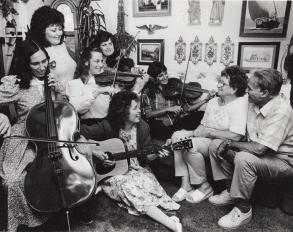
To donate to the Furtado Family Scholarship Fund, contact the NBSO at 508-999-6276. 24-25
For nearly sixty years, members of the Furtado family have made music with the New Bedford Symphony Orchestra. During that time, their talent and passion for music have made a major contribution to the growth and impact of the NBSO in the community. Moreover, as teachers they have shared that talent and passion with countless students throughout the South Coast, enriching the lives of those students and our community as a whole.
In recent years, four members of the family—Judith Stoltenberg, Teresa Ouellette, Susan Bouley, and Marilyn Melanson—played in the orchestra. Upon the completion of the 2017-18 season, they informed the NBSO that it was time to bring this amazing musical run to a close and retire from the orchestra.
But a musical legacy like that of the Furtado family can never really “retire.” To recognize this and to thank the Furtado family for all it has done for the NBSO and the music community of the South Coast, the New Bedford Symphony Orchestra is very pleased to announce that it has established the Furtado Family Scholarship. This scholarship, which will provide financial aid to students in the NBSO’s youth orchestra programs, will be just one of the many ways that the Furtado family’s legacy of making music and bringing the joy of music to others will always be a part of the New Bedford Symphony Orchestra and the South Coast community.



“Welcome to another season of superb chamber music performed by artists of the NBSO. This year baritone Philip Lima joins us for an adventurous vocal program; clarinetist Nicholas Brown interprets trios of Brahms and Khachaturian; and maestro Yaniv Dinur lends his virtuosity to the Brahms Piano Quintet. Throughout the season, masterworks traversing three centuries disport with an eclectic array of works that lift the spirit while pleasing the senses and teasing the intellect. With special gratitude to Patty Plum Wylde for her sponsorship of our opening concert, we look forward to embarking on another superb journey with you, our steadfast supporters. Thank you so very much!”
October 12 & 13, 3 PM
Special Performance: October 11, 7 PM
New Bedford Whaling Museum
A DAZZLING VOCAL JOURNEY Featuring Philip Lima, baritone
NOVEMBER 30 & DECEMBER 1
THREE AWESOME TRIOS
GALAXY FEBRUARY 1 & 2
TWIN METEORS AND A TWINKLING STAR
ELAN MARCH 29 & 30
ELEGANCE, INTELLECT, SURPRISE, DELIGHT
AND SOUL MAY 3 & 4
MAGIC POTIONS
Saturday Concerts: 3:00 PM
St. Gabriel’s Episcopal Church | 124 Front Street, Marion
Sunday Concerts: 3:00 PM
St. Peter’s Episcopal Church | 351 Elm Street, South Dartmouth
Individual Concert Tickets: $25
Save 20% by subscribing to all 5 concerts for just $100! Visit nbsymphony.org or call the NBSO office: 508-999-6276 ext. 222
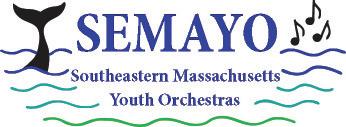
2024–2025 Concert Schedule:
Sunday, November 24, 2023 | 3:00 PM
Sunday, December 15, 2023 | with NBSO, 3:30 & 7:00 PM
Sunday, March 2, 2024 | 3:00 PM Sunday, May 19, 2024 | 3:00 PM
The Southeastern Massachusetts Youth Orchestras bring together talented young musicians from across the Southeastern Massachusetts region to participate in an educational and artistic experience in a full orchestra setting. Membership in the Southeastern Massachusetts Youth Orchestras is open to students of grade school age through age 21.
Rehearsals take place at the College of Visual and Performing Arts, UMass Dartmouth.
Consider attending our fourth annual SEMAYO Summer Camp, July 2025! New members are always welcome and all students are accepted after a placement audition.
For information on scheduling your placement audition, rehearsal schedule, summer programs, and upcoming concerts please visit www.semayo.org or email youth@nbsymphony.org
SEMAYO is a program of the New Bedford Symphony Orchestra


The NBSO partners with local organizations, agencies, and regional music organizations to create experiences that connect people of all ages and cultures. Examples include:
AHA! New Bedford
Alma del Mar Charter School
ArtNet
Association for the Relief of Aged Women
Buttonwood Park Zoo
Buy Black NB
Buzzards Bay Brewing
Cape Verdean Association in New Bedford
Co-Creative Center
Dartmouth Public Libraries
Dartmouth Natural Resources Trust
DATMA
Discovery Language Academy
Gomes Elementary School English Language
Learners Parents Council
Greater New Bedford Youth Alliance
Groundwork
Haskell Gardens
Lloyd Center for the Environment
Love The Ave
Music from Lands End Wareham
New Bedford Art Museum/ArtWorks!
New Bedford Creative
New Bedford Historical Society
New Bedford Parks and Recreation
New Bedford Public Schools
NB Roots & Branches
New Bedford Whaling Museum
Our Sister Schoool
Rotch-Jones-Duff House & Gardens Museum
Taunton River Watershed Alliance
The Drawing Room
Third EyE Youth Empowerment
United Way Foster Parents Council
Youth Opportunities Unlimited
The NBSO is also committed to sharing information about upcoming concerts by our Musical South Coast colleagues. (All local music organizations are welcome to contact us to be included!)
Arts in the Village
Buzzards Bay Musicfest
Concerts at the Point
Delight Consort
Fall River Symphony
Greater New Bedford Choral Society
Music at St. Anthony’s
Music from Land’s End Wareham
New Bedford Festival Theatre
Seaglass Theater Company
Showstoppers
Sippican Choral Society
South Coast Children’s Chorus
Southeastern Massachusetts Festival Chorus
Tri-County Symphonic Band
Zeiterion Performing Arts Center
Don’t miss a beat! Visit nbsymphony.org to join the NBSO mailing list and receive our monthly e-newsletter with information on a variety of musical events in your community.





We believe that music should be accessible to everyone.
Since 1915, YOUR New Bedford Symphony Orchestra has been making powerful connections throughout the Southcoast. In addition to the magic we bring to the stage, the NBSO provides life-changing music programs to over 8,000 children a year.
This is exactly what you will see and hear in a new video highlighting NBSO’s mission and our impact in the community.
Each and every dollar donated makes a difference and helps us create incredible musical performances, provide free community concerts for families and develop new educational programs, inspiring creativity, expression and joy.
Join us. Spread the word. Make a donation. 100% of every gift goes directly to preserving and promoting the love of music and musicians and passing it on to the next generation.
Music. Education. Community… WE ARE YOUR SYMPHONY!









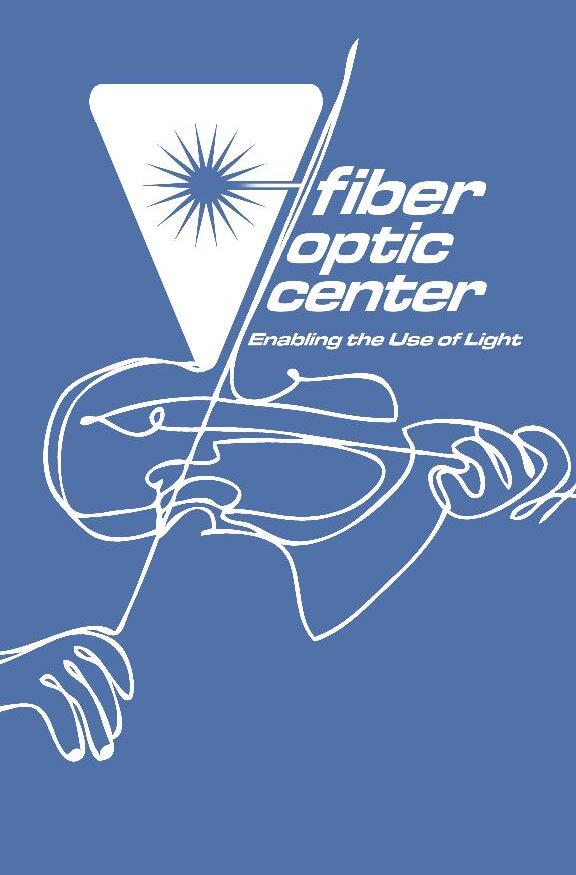

SATURDAY . SEPT 28 . 7:30PM
BRONSPIEGEL AUDITORIUM, NEW BEDFORD HIGH SCHOOL
Yaniv Dinur, conductor
NBSymphony_2020_February.qxp_Layout 1 2/25/20 12:12 PM Page 1
Jazz Quartet: Ben Cook (piano), Dave Zinno (double bass), Max Goldman (drums), Dino Govoni (tenor sax)
KabuJazz Ensemble featuring Candida Rose
Ethan Wood, NBSO Assistant Concertmaster
Dedicated to the memory of Shulamith Friedland
Richard Wagner: Prelude to Tristan und Isolde
Jazz Quartet: Jamming on Wagner’s “Tristan Chord”
KabuJazz Ensemble: Love Each Other Through, Sodade
Giovanni Gabrieli: Canzon per sonar duodecimi toni a 8
Johann Sebastian Bach: Chaconne
INTERMISSION
It s a delight to hear three supremely talented musicians find common ground, especially considering it s their first recording together As many know, Tim Ray (piano), John Patitucci (bass), and Terri Lyne Carringtonn (drums) have diverse backgrounds, styles, and experience, but share a common connection to Berklee College Ray, currently Tony Bennett s musical director, is a longtime road companion to Lyle Lovett and Jane Siberry Patitucci initially made a name for himself with the great Chick Corea and has spent the better part of the last two decades with Wayne Shorter Carrington, also with Shorter and a myriad of other great jazz artists, is at the vanguard of today’s drum corps, with power, finesse, and a vision for the instrument that few can match
Johannes Brahms: Symphony No. 4, op.98, E minor
I. Allegro non troppo
There s really something to the idea that experience helps you see things more clearly
II. Andante moderato
On the transcendent Watershed, guitarist John Stein and his simpatico band realize this set of deep grooves with remarkable clarity
III. Allegro giocoso
IV. Allegro energico e passionato
Concert Sponsor:
Aided by the considerable talents of Frank Herzberg (bass) Zé Eduardo Nazario (drums), Daniel Grajew (keyboards) and Teco Cardoso (flute and saxes) Stein manages to reveal the magic h iding in these grooves and rhythms Each of Stein’s accompanists contribute to that discovery, especially on tunes like the warm Rio Escuro, the quiet sassy funk of Pat Martino’s “Cisco ” and the breezily melodic Wally Stein, about to retire from his decades-long teaching career at Berklee (also his alma mater) in order to play music full time, demonstrates a sturdy resolve to lay bare the soul and t he spirit of these songs, as well as the delicate beauty in his band’s performance Watershed is suffused with lyricism and artistic clarity as he raises the bar for his own future visions
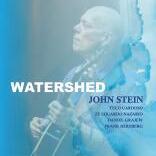

Please remember to turn off anything that beeps or glows. As a courtesy to the performers and your fellow concertgoers, no flash photography.

BEHAVIORAL
CARDIOLOGY
DERMATOLOGY
ENDOCRINOLOGY
FAMILY
GASTROENTEROLOGY
GENERAL
INFECTIOUS
NEPHROLOGY
NEUROLOGY
NEUROSURGERY
OBSTETRICS/GYNECOLOGY
ONCOLOGY/HEMATOLOGY
ORTHOPEDICS
OTOLARYNGOLOGY
– John A. Logan
PAIN MANAGEMENT
PEDIATRICS
PULMONOLOGY
RHEUMATOLOGY
URGENT CARE
UROLOGY
VASCULAR SURGERY
WEIGHT MANAGEMENT
Candida Rose, Lead vocals
Heribar Estrela, Keyboards and background vocals
Santos Spencer, Guitar and background vocals
Tchico Evora, Drumset and Percussion
Under the leadership of Candida Rose Baptista and musical direction of J. L.

Santos Spencer, the KabuJazz Ensemble is a group of talented Cabo Verdean and Jazz-oriented musicians who come together to bring a unique combination of Cabo Verdean and American — primarily Jazz —musical influences to audiences cross-country, a combination Candida Rose has labeled “KabuJazz”. Starting with her debut CD in 2006 entitled “KabuMerikana: The Sum of ME”, the KabuJazz Ensemble has seen many configurations of well-known musicians which have included John Kordalewski, Santi Debriano, Manny Santos, Kalu Monteiro, Djim Job, Zerui DePina, Justin Ramos, and the late Lance Gunberg, just to name a few. The current core group, with Candida Rose on Lead Vocals, consists of: Heribar Estrela on Keyboards and Background Vocals, Santos Spencer on Guitar and Background Vocals, Tchico Evora on Drumset and Percussion, and Emmanuel Escobar on Bass, Saxophone, and other wind instruments.
The KabuJazz Ensemble has entertained audiences at events and festivals far as Alaska, as well as in the Massachusetts, Rhode Island, and general New England areas. In addition, along with Candida Rose’s presentations of “ KabuMerikanus - The Sum of US: Exploring the Cabo Verde/United States Musical Connection and Legacy” the group has educated students at various New England schools with assemblies and cultural workshops.

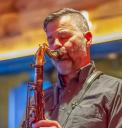
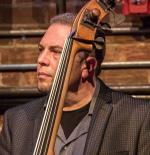
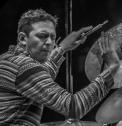
Max Goldman, drums
Max Goldman is a drummer and teacher based in Rhode Island. He attended The New School for Jazz and Contemporary Music where he studied under Tony Moreno, Gerald Cleaver and Kenny Washington. After graduating he continued to live in New York City for 16 years
Cont. pg. 33
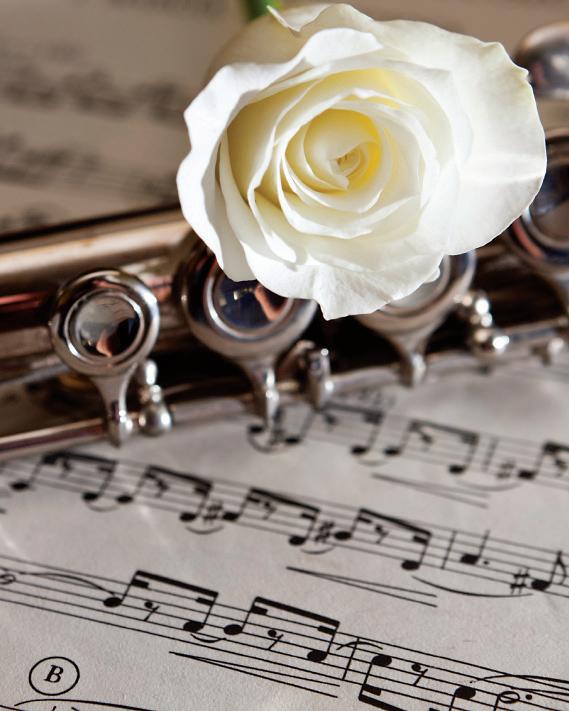

playing regularly and touring in the US, Europe, Russia and South America. Many diverse collaborators have shaped Max’s unique musical voice, among them The Elan Mehler Group, The Danny Fox Trio, Old Time Musketry, With Orbit, Tony Malaby, Michael Attias, Midnight Magic, Becca Stevens, Chris Tordini, Mette Henriette, Jessica 6, Daniel Carter, Will Mcevoy, Patrick Breiner, Eliot Cardinaux, Andrew Dow, Tim Berne, Kenny Warren, Marty Ballou, John Almark, Dino Govoni, Jeff Platz, Brendan Carniaux, John McKenna, Anna Webber, Jay Azzolina and many more.
Dave Zinno, double bass
Dave Zinno has been performing professionally since 1980 and is faculty at URI, Salve Regina, and Brown University. After studies at Berklee College of Music and The University of Rhode Island, he moved to Seattle WA. where he worked with Grammywinning vocalist Dianne Schuur for one year. While out west Dave also performed with jazz greats Julian Priester, and Hadley Caliman, and studied for a short time with Gary Peacock. From there he moved on to New York City where he studied with bassist Walter Booker Jr. and performed with jazz greats including Jimmy Cobb, Junior Cook, Jimmy Heath, John Hicks, Victor Lewis, John Medeski, Larry Willis, and many others. Dave began regular tours in Europe, South America, North Africa, and around the US and was faculty at the Toulon (France) Jazz Festival Workshop for 11 years.
Ben Cook, piano
Ben Cook is a pianist whose performing career encompasses numerous different musical arenas. As a regular pianist in the Boston Pops Orchestra, he has logged hundreds of performances at Symphony Hall, the Tanglewood Music Festival, on U.S. tours under the direction of maestros Keith Lockhart and John Williams, and on the orchestra’s 2023 tour of Japan. His roles in the ensemble include orchestral pianist, rhythm section player, and accompanist in numerous styles, including jazz, pop, Broadway, classical, and John Williams movie soundtrack music.
Cook also works extensively as a jazz pianist, as an accompanist and sideman, in the New England area. He appeared on several records by multi-instrumentalist Miles Donahue, performed on four albums with the jazz/world music ensemble Crosscurrent, and is a veteran of countless Broadway tour pit orchestras. Cook is a graduate of University of North Texas, where he studied with Dan Haerle and Mary Nan Mailman, and is an associate professor at Berklee College of Music.
Dino Govoni, tenor sax
Dino Govoni learned from two of Boston’s tenor sax greats, Jerry Bergonzi and George Garzone, and furthered his studies by attending Berklee College of Music, studying with the late great Joe Viola. He is now a member of the faculty at Berklee and is a regular guest soloist with the Boston Pops.
Dino has played and/or recorded with such diverse artists as Grover Washington, Jr., Randy Brecker, Queen Latifah, Ben Folds, Melinda Doolittle, Terence Trent D’Arby, Robben Ford, Mel Tormé, the Manhattan Transfer, the Tommy Dorsey Orchestra, and Frankie Valli. May of 2000 saw Govoni participating in Arista Records’ star-studded 25th anniversary concert, playing with Aretha Franklin in New York City.





Estimated length: 12 minutes
Happy love stories inspire few works of art; it is the tragic tale that draws us in. Richard Wagner understood this lure, and saw the legend of Tristan and Isolde as the perfect vehicle to explore the nature of an all-consuming passion. As he researched the story, Wagner wrote, “This Tristan is turning into something terrifying!”
At its root, passion is, despite the romance commonly attached to the notion, unbearable (think of the Passion of Christ). The blazing intensity it creates cannot last; those afflicted burn up like moths driven to self-immolation in an irresistible flame. “The world, power, fame, splendor, honor, chivalry, friendship, all are dissipated like an empty dream,” wrote Wagner in an 1860 program note for a Paris performance of the Prelude. “One thing only remains: longing, longing, insatiable longing … Death … perishing, never awakening, their only deliverance.”
The Prelude opens with Wagner’s famously unresolved “Tristan chord,” which has generated much debate among music scholars regarding its meaning and function. In his book, My Life with Wagner, Christian Thielemann, who served as music director of the Bayreuth Festival from 2015-20, writes: “[the chord] is the password, the cipher for all modern music. It is a chord that does not conform to any key, a chord on the verge of dissonance,” and “The Tristan chord does not seek to be resolved in the closest consonance, as the classic theory of harmony requires; [it] is sufficient unto itself, just as Tristan and Isolde are sufficient unto themselves and know only their love.” In the context of the opera, the chord’s lack of harmonic stability foreshadows the lovers’ futile search for happiness. Throughout the Prelude, Wagner’s phrases soar and yearn for a resolution just beyond reach.
Candida Rose | Armando Zeferino Soares
Estimated length: 10 minutes
Born and raised in New Bedford, Massachusetts, Candida Rose Baptista, known professionally as Candida Rose, is a second-generation American-born Cape Verdean. She embodies the essence of creating connection in her life’s work as a vocalist, songwriter, entertainer, educator, and cultural worker.
Rose describes “Love Each Other Through” as a love letter for New Bedford. “It is my heartfelt response to the past few years, years of upheaval which left a mark on my very soul, and the soul of a city and nation.”
“Sodade” is a 1950s Cape Verde song composed by Armando Zeferino Soares; it gained wide exposure in 1992 when singer Cesária Évora featured it on her album, Miss Perfumado. “Sodade” is the Cape Verdean Creole version of the Portuguese word “saudade,” which refers to feelings of longing, homesickness, or nostalgia.
13 - 22, 2024
8 - 17, 2024
17 - 26, 2025
FEB /MARCH
FEB 28 - MAR. 9, 2025
MAY
2 - 11, 2025
DIRECTED BY LAWRENCE R. HOUBRE JR.
JEFF WHITTY
DIRECTED BY JAMES SANGUINETTI
RED
JOHN LOGAN
DIRECTED BY SUZANNE J. HOUBRE
DAVID LINDSAY-ABAIRE
DIRECTED BY JAMES SANGUINETTI
JOSHUA HARMON
DIRECTED BY ERIC R. PARADI S
“Admissions” is presented by arrangement with Concord Theatricals on behalf of Samuel French, Inc. “Ken Ludwig's The Game's Afoot ” is presented by arrangement with Concord Theatricals on behalf of Samuel French, Inc. www.concordtheatricals.com
YOUR THEATRE INC AT THE STEEPLE PLAYHOUSE 159 WILLIAM
Giovanni Gabrieli, Austrian composer (c. 1554–57 to 1612)
Estimated length: 4 minutes
The music of Renaissance composer Giovanni Gabrieli is so intimately connected with the architecture of St. Mark’s Basilica, in Venice, that one could argue convincingly for the building as a co-composer. St. Mark’s Basilica, which fronts St. Mark’s Square, in the heart of Venice, is built in the shape of a Greek cross. Its interior features soaring ceilings and facing balconies that sit high atop gold mosaic-covered columns. For Gabrieli, the balconies influenced his musical conceptions, particularly his use of cori spezzati – split choirs of voices or instruments – each situated in a physically distinct space. Whether facing one another in the balconies or placed front and rear, the distinctive antiphonal sound of two groups dialoging in space and time became Gabrieli’s compositional signature.
The biographical details of Gabrieli’s life are scant, including the exact year of his birth. He may have been raised by his uncle Andrea Gabrieli, who preceded Giovanni as the principal composer at St. Mark’s; Giovanni described his relationship to Andrea as “little less than a son.” After Andrea’s death in 1585, Giovanni, who had been St. Mark’s organist, assumed his uncle’s role as primary composer as well. It was during this time that he composed his finest works of sacred vocal and instrumental music.
Gabrieli had access to some of the best musicians in Italy, and he composed music designed to showcase their virtuoso talents. Gabrieli’s writing for brasses demonstrates the caliber of the players he worked with, especially when you consider that 16th-century brasses had no valves, and changes of pitch were made entirely with the embouchure (mouth position). Most of Gabrieli’s brass works were given the title Canzon or Canzona (Italian for “song”), along with an indication of which mode he had chosen for them (modes, also known as church modes, are scales that predate modern tonality). The duodecimi (12th mode) has been described as both “festive “and “triumphant.”
BWV 1004 (arr. Raff)
Johann Sebastian Bach, German composer (1685–1750)
Estimated length: 18 minutes
“In his youth, and until the approach of old age, he played the violin cleanly and penetratingly … He understood to perfection the possibilities of all stringed instruments. This is evidenced by his solos for the violin and for the violoncello without bass. One of the greatest violinists once told me that he
had seen nothing more perfect for learning to be a good violinist, and could suggest nothing better to anyone eager to learn, than the said violin solos without bass,” – Carl Philipp Emanuel Bach, remembering his father’s skill as a violinist.
That Johann Sebastian Bach played violin well may come as a surprise to those who think of harpsichord and organ as his primary instruments. C. P. E. Bach’s reminiscences about his father’s ability to play and write intuitively for the violin remind us that the elder Bach possessed a player’s understanding of the nuances of the violin. His solo sonatas and partitas, widely considered some of the finest and most difficult music in the solo violin repertoire, bear this out. The power and depth of this Chaconne speaks to musicians and listeners across time and place. Many composers, including Felix Mendelssohn, Robert Schumann, Johannes Brahms, and Ferruccio Busoni, have arranged this compelling melody and its 64 variations for other instruments. 19th-century German composer Joseph Joachim Raff believed Bach’s surviving version for solo violin was actually an arrangement of an earlier lost version intended for a larger ensemble. In the preface to his orchestrated arrangement, Raff wrote, “J. S. Bach’s compositions for violin have … such a significant polyphonic content that it is reasonable to assume that they were not originally written for violin … This is also undoubtedly the case with the Ciaconna; The numerous beginnings and mutilations in this piece must strike even the layman and lead him to the conclusion that it must have originally existed in a different form and that the present version is merely an arrangement. To trace the polyphonic content that must have been in the first version of the Ciaconna and to bring it into fluent voice-leading in the modern orchestra was the purpose of the present arrangement, which claims no other merit than being the first attempt of its kind.”
The simple four-measure theme repeats, with elaborations and variations of increasing inventiveness. Some of the variations are in D major, some in D minor, which obscures the listener’s sense of a “home” key. Bach’s biographer Philip Spitta summed up the impact of the Chaconne when he wrote, “The overpowering wealth of forms pouring from a few and scarcely noticeable sources displays … the most absolute mastery over an imagination the like of which no other composer was ever endowed with.”
Johannes Brahms, German composer (1833–1897)
Estimated length: 40 minutes
In a 1947 essay titled “Brahms the Progressive,” Arnold Schoenberg described Johannes Brahms as one of only a few composers whose music emerges from a simultaneous and indivisible combination of inspiration and intellectual skill. Brahms’ Fourth Symphony is an exquisite synthesis of heart and mind; its elegance is analogous to a mathematical equation whose deceptively simple formula expresses new, startling, and complex concepts.
Brahms composed the Fourth Symphony during the summers of 1884-85 in Mürzzuschlag, his summer retreat in the mountains southwest of Vienna. In September 1885, Brahms wrote to Hans von Bülow, conductor of the Meiningen Orchestra, expressing his hope that von Bülow would take on the new symphony. Brahms also admitted his doubts about the music’s appeal: “I’m really afraid it [the Fourth Symphony] tastes like the climate here. The cherries don’t ripen in these parts; you wouldn’t eat them!” Brahms needn’t have worried; after his first rehearsal of Op. 98, von Bülow wrote, “No. 4 gigantic, altogether a law unto itself, quite new, steely individuality. Exudes unparalleled energy from first note to last.”
Despite Brahms’ misgivings that the public would not respond well to his “neue traurige Symphonie” (new tragic symphony), the audiences reacted enthusiastically at the premiere, applauding each movement. The influential 19th-century critic Eduard Hanslick, a lifelong champion of Brahms’ music, included this encomium in his review: “Brahms is unique in his resources of genuine symphonic invention; in his sovereign mastery of all the secrets of counterpoint, harmony, and instrumentation; in the logic of development combined with the most beautiful freedom of fantasy.”
The main theme of the Allegro non troppo reveals Brahms’ gift for economy: the essence of this lyrical sighing melody is its first four notes. Brahms’ endlessly inventive elaborations and development of these four notes generate much of the music of this movement. Countering criticisms of his work as “too cerebral,” in the Andante moderato, Brahms writes music of pure aural pleasure.
The Allegro giocoso begins with an energetic wallop of sound and an amusingly odd rhythm; here Brahms gives us a glimpse of his humorous side. At the premiere, the audience delighted in this rowdy ebullient music and called for an encore. While Brahms was pleased with the reaction, he declined the request.
For many years Brahms had been drawn to the Baroque form of the chaconne, a series of variations in a slow tempo, usually in ¾ time. In an 1877 letter to Clara Schumann, Brahms shared his fascination with this format: “If I could picture myself writing, or even conceiving, such a piece, I am certain that the extreme excitement and emotional tension would have driven me mad.”
For the Allegro energico e passionato, Brahms wrote a chaconne with 32 variations and a coda. Hanslick described the last movement as exhibiting “an astonishing harmonic and contrapuntal art never conspicuous as such and never an exercise of mere musical erudition.” Brahms’ absolute mastery of form is revealed in this music of profound depth and power.
© Elizabeth Schwartz


SATURDAY . OCT 26 . 7:30PM
BRONSPIEGEL AUDITORIUM, NEW BEDFORD HIGH SCHOOL
Yaniv Dinur, conductor
Newport Contemporary Ballet
Mathilde Wantenaar: Prélude à une nuit américaine
George Gershwin: An American In Paris
INTERMISSION
Leonard Bernstein: Symphonic Dances from West Side Story
Maurice Ravel: Daphnis et Chloé, Suite No. 2
Concert Sponsor:

Please remember to turn off anything that beeps or glows. As a courtesy to the performers and your fellow concertgoers, no flash photography.


WE ARE SYMPHONY YOUR
Newport Contemporary Ballet (formerly known as IslandMovingCo) is a non-profit, professional, contemporary ballet company with a long history of enriching the cultural fabric of communities throughout Rhode Island, the region, and the world. The company creates and presents relevant, visceral, and engaging dance works by a diverse group of the world’s leading choreographers and collaborating artists. In addition to works created for traditional stages, NCB is widely known for its unique approach to experiential and site-specific performances.
Our Mission: Newport Contemporary Ballet engages bodies, hearts, and minds through dynamic and thought-provoking performance, transformative dance education, and deep community connection.
The Company is committed to providing a platform for the development and performance of new choreography and has commissioned over 70 new dances, from modern and contemporary ballet choreographers. Over a dozen musical scores have been commissioned and the Company has collaborated with visual artists, actors, and poets on original productions presented as part of our main-stage and Family Series productions.
NCB’s 13 professional dancers are remarkable for their intelligence and adventurous spirit. In recent years, the dancers have worked with 20 choreographers and premiered work in Newport, Boston, Providence, New York, and Los Angeles as well as international tours to Kazakhstan and Italy. Lewis Segal of the LA Times observed, “NCB (formerly Island Moving Co) secured its reputation for fusing conceptual risk with technical prowess.” In New York, Attitude Magazine called IMC “a refreshing combination of grassroots camaraderie and big city technique…a group of working dancers going for broke.”
The company has received numerous grants and commissions from individuals and foundations including the National Endowment for The Arts, NEFA, Meet the Composer, the US Consulate for Kazakhstan & Italy, and the RI State Council on the Arts.
In addition to its main-stage productions, NCB is known for its site-specific and adaptive staging of performances in iconic and non-traditional settings such as Belcourt Castle, Rosecliff Mansion, and the Tall Ship- H/V Oliver Hazzard Perry.



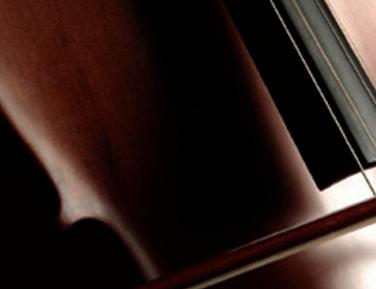

508-984-4800
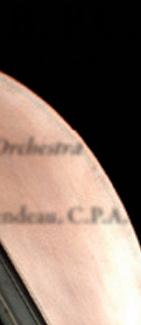





Mathilde Wantenaar, Dutch composer (b. 1993)
Estimated length: 9 minutes
Mathilde Wantenaar’s music has been described as lyrical, enchanting, eclectic, and yet authentic. The combination of her craftsmanship and openness to a broad array of genres make Wantenaar a very versatile composer. She pursued a double life as a composer and singer until 2019 when commissions for an orchestral work and an opera necessitated a renewed focus on music writing.
Prélude à une nuit américaine is Wantenaar’s first orchestral composition and is based on a preexisting work Wantenaar wrote as an experiment in 12-tone music. It contained a melodic line Wantenaar describes as “beautiful,” and “somewhat wrenching … euphonious and at the same time a bit jazzy.” In a podcast interview with Thea Derks, Wantenaar explained, “I am an admirer of Ravel and Debussy, but also of Tchaikovsky,” particularly his long-flowing melodies. Prélude à une nuit américaine features “equally beautiful long-held string lines” that combine a “jazzy … American touch” and its “French, nocturnal sultriness.” The Utah Arts Review added, “It has a misty, atmospheric quality like the Debussy piece referenced in its title, but with more of a sense of drama and pathos.”
Estimated length: 16 minutes
“My purpose here is to portray the impression of an American visitor in Paris, as he strolls about the city and listens to various street noises and absorbs the French atmosphere,” wrote George Gershwin about his tone poem, An American in Paris. “As in my other orchestral compositions, I’ve not endeavored to represent any definite scenes in this music. The rhapsody is programmatic only in a general impressionistic way, so that the individual listener can read into the music such as his imagination pictures for him.” This highly evocative, colorful symphonic music expertly captures the sights and sounds of Paris as its American protagonist wanders through the city streets. To illustrate the American’s journey, Gershwin included several of what he termed “walking themes,” which recur throughout the work. The trumpet sounds the most recognizable of these, the “homesick music,” in a bluesy solo. The “American” section concludes with an up-tempo Charleston played by a pair of trumpets, and the walking themes return. Finally, the orchestra winds up with a glittering exuberant finale as night falls on the City of Light.
An American in Paris marked a breakthrough for Gershwin as a composer, as the first symphonic piece for which he created his own orchestrations. When Rhapsody in Blue premiered in 1924, Gershwin was criticized because the Rhapsody’s orchestral version was created by Ferde Grofé. Four years after Rhapsody’s premiere, with An American In Paris, Gershwin demonstrated his growing command of orchestral colors, effectively silencing his detractors.
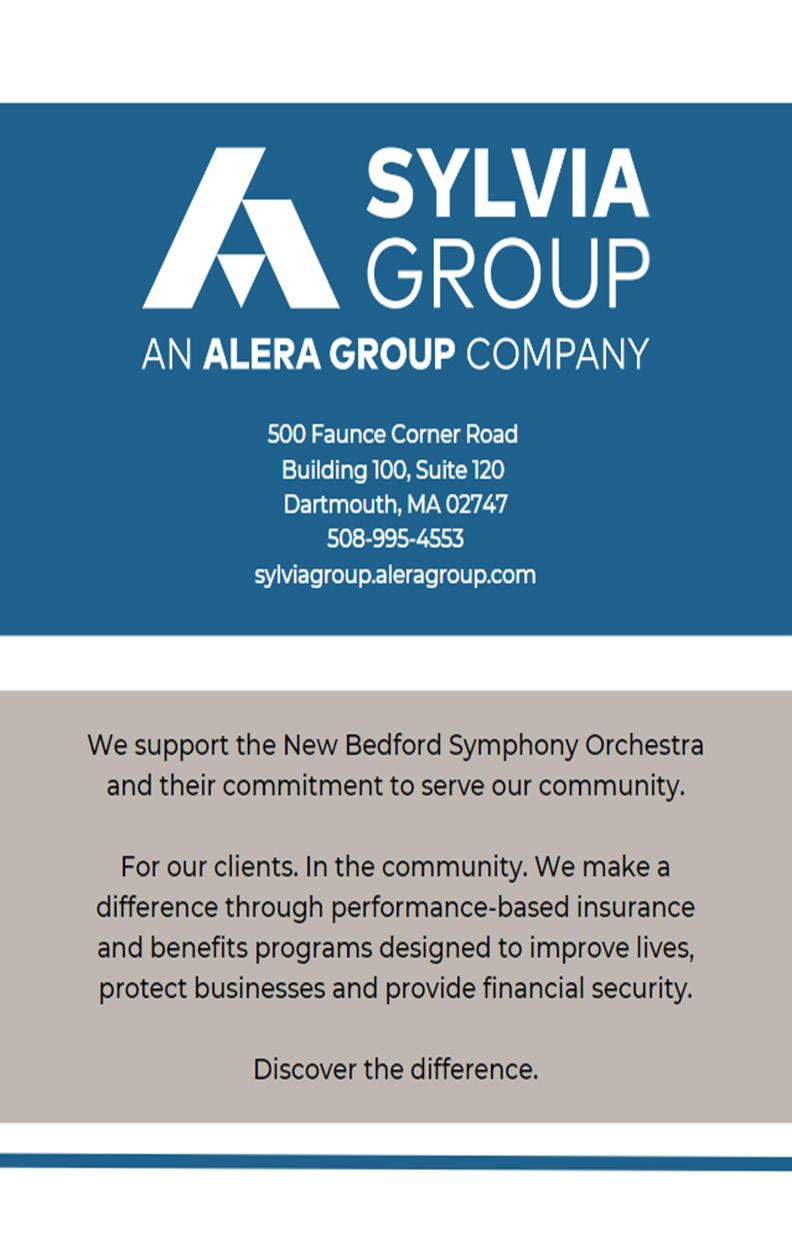
Leonard Bernstein
Estimated length: 23 minutes
Romeo and Juliet’s tale of tragic love transcends time and place; it retains its emotional intensity whether performed in Shakespearean costume or modern dress, with words in English or German or Japanese. In fact, Shakespeare’s story is itself an adaptation, taken from the Greek myth of starcrossed lovers Pyramus and Thisbe.
In 1957, Leonard Bernstein’s West Side Story transformed Shakespeare’s Verona into the gang-infested streets of New York City, and the young lovers into Tony and Maria, members of warring gangs of whites and Puerto Ricans. Bernstein’s groundbreaking musical, conceived with choreographer Jerome Robbins, fundamentally changed the nature of musical theater. Since its premiere, West Side Story has become synonymous with Bernstein’s vibrant, energetic style. The nine movements of the Symphonic Dances were assembled in 1961 and follow the basic outline of the musical. The Prologue introduces the Jets and Sharks and their constant gang war, which is broken up by a piercing blast from a policeman’s whistle. This segues into a tender dream sequence, set to the music of Somewhere, in which the two gangs cease their warfare and become friends. In the Scherzo, this dream world continues as the gang members escape the stifling atmosphere of the city to enjoy fresh air and sunshine. This dream is abruptly snuffed out in the exhilaratingly ominous Mambo, in which the Jets and Sharks continue their rivalry through an exciting and violent dance of one-upmanship. The heat and energy of the Mambo dissolve into an intimate Cha-Cha when Tony and Maria first speak to one another. Tony’s gang, the Jets, then take the stage to demonstrate their unshakeable Cool. The Sharks confront the Jets in a climactic Rumble, in which the leaders of both gangs are killed. Tony’s funeral procession, set to the music of Somewhere, brings the Symphonic Dances to its affecting conclusion.
A hundred years after the Zeiterion first opened its doors, and 40 years since its last major renovation, we’re embarking on a top-to-bottom building transformation and creating a true community space for the arts!
Construction has begun and we'll need your help to get to the finish line. Visit zeiterion.org/donate.

Maurice Ravel
Estimated length: 18 minutes
Like West Side Story, the original tale of Daphnis and Chloë also comes from ancient Greece. The story, a pastoral romance, was adapted by Michel Fokine for Serge Diaghilev’s Ballets Russes. It was first performed as a complete ballet in Paris on June 8, 1912. When Maurice Ravel was asked to provide the music, he agreed, despite his reservations; Fokine’s adaptation of the story of Daphnis and Chloë did not especially appeal to Ravel. Instead of adhering to the specifics of plot and scene, Ravel sidestepped Fokine’s version and wrote what he called “a great choreographic symphony.” Although the full ballet is not often performed, Ravel’s two suites, especially Suite No. 2, are frequently heard in concert.
The Suite No. 2 has three sections that correspond to the final scenes of the full ballet. The opening, Lever du jour, depicts a ravishingly beautiful dawn. We hear birdsong, the rippling of water and cheerful tunes from shepherd’s flutes, as Daphnis reunites with his beloved Chloë, who had been kidnapped by pirates and later rescued by the god Pan. In the Pantomime, Daphnis and Chloë act out Pan’s rapturous love for the nymph Syrinx (a stunningly beautiful flute solo accompanies this section). In the Danse générale, all the nymphs and satyrs join Daphnis and Chloë for a wild, joyous revel; Ravel’s working title for it was “Bacchanal.”
© Elizabeth Schwartz

SATURDAY . NOV 16 . 7:30PM
BRONSPIEGEL AUDITORIUM, NEW BEDFORD HIGH SCHOOL
Yaniv Dinur, conductor
Hector Del Curto, bandoneon
Johann Sebastian Bach: Brandenburg
Concerto No. 1 in F, BWV 1046
I. [Allegro]
II. Adagio
III. Allegro
IV. Menuet; Trio 1; Menuet; Polonaise; Menuet; Trio 2; Menuet
Astor Piazzolla: Oblivion (arr. Robert Longfield )
Johann Sebastian Bach: Brandenburg Concerto No. 3 in G, BWV 1048 [Allegro]
Allegro
Astor Piazzolla: Aconcagua; Concerto for Bandoneon
Allegro marcato | Moderato | Presto
Johann Sebastian Bach: Suite No. 2 in B minor, BWV 1067
I. Overture
II. Rondeau
II. Sarabande
IV. Bourrée I & II
V. Polonaise & Double
VI. Menuet
VII. Badinerie
The performance of guest artist Hector Del Curto is supported by a generous gift made in memory of Ms. Joan Underwood.
Concert Sponsor:

Please remember to turn off anything that beeps or glows. As a courtesy to the performers and your fellow concertgoers, no flash photography.
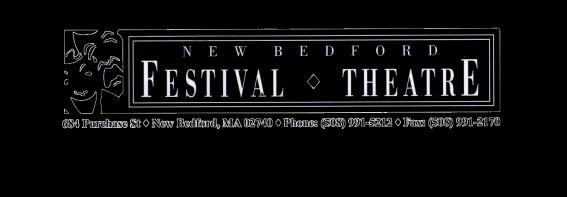






Praised by the New York Times as a “splendid player,” Grammy-winning musician, composer, recording artist, and educator Hector Del Curto is one of the world’s most sought–after bandoneonists. He has performed with many renowned artists across musical genres and appeared with the world’s leading orchestras, including the Metropolitan Opera Orchestra, Dallas Symphony Orchestra, National Symphony Orchestra, Saint Louis Symphony, Orpheus Chamber Orchestra, and Rochester Philharmonic Orchestra.
Mr. Del Curto’s recent engagements include a recorded performance of Piazzolla’s bandoneon concerto Aconcagua with the Boston Symphony Orchestra and Maestro Thomas Wilkins, a performance of Piazzolla’s Four Seasons of Buenos Aires with the Indianapolis Chamber Orchestra, and a performance with the Portland Symphony Orchestra, which included Del Curto’s composition, Paris to Cannes. His 2022-2023 season highlights include performances with the Richmond Symphony Orchestra with his quintet and his son Santiago and a recording of his commissioned work, Trace of Time with the Apollo Chamber Players.
Buenos Aires-born Del Curto is a fourth-generation bandoneonist who won the title “Best Bandoneon Player Under 25” in Argentina at age 17, and was subsequently invited to join the orchestra of the legendary Osvaldo Pugliese, the “Last Giant of Tango”. In 1998, Mr. Del Curto became music director of Forever Tango, a Broadway hit that continues to tour the world. Soon after, he founded the Eternal Tango Orchestra, a ten-piece ensemble that debuted at New York’s Lincoln Center, as well as the Hector Del Curto Tango Quintet. Both are featured on his self-produced albums, Eternal Piazzolla and Eternal Tango, which were profiled by BBC News and Public Radio International.
Mr. Del Curto has appeared on recordings with such artists as Osvaldo Pugliese, Astor Piazzolla, Paquito D’Rivera, Tito Puente, and Plácido Domingo. As part of the Pablo Ziegler Trio, he received a 2018 Grammy award for Jazz Tango.
Dedicated to the education, outreach, and the preservation of tango, Mr. Del Curto co-founded the Stowe Tango Music Festival in 2014 and continues to serve as its artistic director. The premier tango music festival in the United States, it draws the most talented tango musicians and dancers, as well as fans, from all over the globe. He also produced the festival’s award-winning album: Live at the 2016 Stowe Tango Music Festival.
Brandenburg Concerto No. 1 in F major, BWV 1046
Estimated length: 20 minutes
Brandenburg Concerto No. 3 in G major, BWV 1048
Estimated length: 10 minutes
Johann Sebastian Bach, German composer (1685–1750)
It is a historical irony that Johann Sebastian Bach’s Brandenburg Concertos, written 300 years ago, have become widely known only in the last 75 years. The Brandenburgs’ popularity is a recent phenomenon; they were not published until 1850, a century after Bach’s death. It was not until the 1950s, when musicians began paying serious attention to early music performance practice, did these artful, virtuosic works first reach a wide audience, through the medium of vinyl records. In fact, an argument can be made that, without the invention and wide dissemination of audio recordings, the Brandenburgs might have continued in obscurity. It is also interesting to note that, although the Brandenburgs are some of the most frequently recorded of all Bach’s music, they are not often performed live, and many people who love them have never heard them in performance. One possible reason is the concertos’ unusual instrumentation: in addition to strings, the Brandenburgs call for violino piccolo, 3 oboes, bassoon, 2 recorders, 2 flutes, 2 horns, clarino trumpet, and harpsichord. Whether played on modern or period instruments, the Brandenburgs present a formidable challenge to any musician.
As a precursor to the Classical symphony, the concerto occupies a central place in Baroque music. Concertos originated in Italy, where Antonio Vivaldi and Tomaso Albinoni emerged as masters of the genre. Bach first encountered concertos while studying some of Vivaldi’s scores, to which he had access in Weimar at the court of Duke Wilhelm Ernst. Vivaldi’s influence on Bach’s concertos is clear, especially in the use of ritornello (alternating passages of basic thematic material, played by the full ensemble, with contrasting solo or duet episodes containing new music unrelated to the original theme). Bach uses ritornellos in more than half of all the movements in the Brandenburgs, and elevated the ritornello structure to a new level of refinement and excellence. The first concerto is the only one of the six with four movements. It also features a tiny violin, known as the violino piccolo, as one of the solo instruments, along with two horns, oboe, bassoon, as well as string quartet. As with the other five concerti, the first movement is written in ritornello form, clearly contrasting the basic thematic material with solo passages. The exquisitely beautiful sadness of the second movement Adagio contrasts well with the exuberance of the third movement Allegro, while the final Menuet again features the violino piccolo.
In contrast to the first concerto, the scoring for the third concerto consists entirely of strings, accompanied by harpsichord. Without the different timbres available from other instruments, Bach creates contrast by transposing the themes into different octaves. There is also more pronounced attention to dynamic contrast. The Adagio, which consists only of two cadence
chords in E minor, is a model of brevity, and even the most accomplished masters of Baroque improvisation cannot do much more than embellish the two chords. Some orchestras simply insert another of Bach’s slow movements, usually from the G major Violin Sonata or the G major Organ Sonata. The third concerto concludes with a tightly constructed gigue, which capitalizes on the homogenous texture of the strings.
Estimated length: 3.5 minutes
Estimated length: 20 minutes
Astor Piazzolla, Argentinian composer (1921–1992)
“For me, tango was always for the ear rather than the feet.” — Astor Piazzolla
Astor Piazzolla is inextricably linked with tango. He took a dance from the back rooms of Argentinean brothels and blurred the lines between popular and “art” music to such an extent that, in the case of his music, such categories no longer apply.
“Oblivion,” one of Piazzolla’s most popular and well-known tangos, is part of the score Piazzolla composed for the 1984 Italian film Enrico IV (Henry IV). The evocative melody begins as a milonga, a precursor of tango that originated in Uruguay and Argentina. The slow, sultry steps of the dance flow between the two partners, as does the music, creating an atmosphere of melancholic intimacy.
Piazzolla was a master of the bandoneón, a small accordion-like instrument of German origin, which served as a portable church organ. The distinctive sound of the bandoneón became a fundamental element of Piazzolla’s tangos, and he developed a distinctive way of playing the instrument, standing up with one foot on a stool, rather than sitting down as was customary. When asked about his unconventional method, Piazzolla said he played standing up so he wouldn’t be mistaken for an old woman.
The Concerto Aconcagua showcases the tremendous emotional and virtuosic range of the bandoneón. The outer movements, tangos of sultry power, feature both quicksilver passages and brooding sensuality, while the central section features a breathtakingly intimate bandoneón solo and duet. The music builds to a languorously voluptuous climax before returning to the opening melody.
Piazzolla had previously used the main theme of the closing movement in a soundtrack for the film Con alma y vida. “I didn’t know how to finish it,” Piazzolla recalled, “and then I told myself: I give them a tango so the erudite know that when I want I can write like them, and when I want I can do my thing.”

Johann Sebastian Bach, German composer (1685–1750)
Estimate length: 20 minutes
Composition dates for Johann Sebastian Bach’s orchestral suites are difficult to determine, because none of original scores survive. During his lifetime, Bach held several positions as music director for ensembles in Weimar, Cöthen, and Leipzig. In the 18th century, it was standard practice for employers to retain a composer’s manuscripts when that composer moved on to another post. It is also possible that the music disappeared after Bach died.
The Bach Werke Verzeichnis (Bach Works Catalog, or BWV), catalogs Bach’s music according to genre. Grouping the four suites together gives the impression that all were written at the same time, or that Bach intended them to be performed together. However, Nos. 1 and 4 are earlier works, probably composed while Bach worked in Cöthen, while No. 3 is likely from 1731, and No. 2 from Bach’s time in Leipzig.
All four suites, which Bach referred to as Overtures, share similar features. They begin with an overture in French Baroque style, characterized by robust dotted rhythms and glittering majesty. In BWV 1067, the rest of the suite consists of Baroque court dances in contrasting meters. In the Sarabande, a slow dance in triple meter, Bach indulges his fondness for intricate counterpoint by having the bass play the same line as the violins and flute but beginning five notes lower; this is known as a canon at the fifth.
Instead of a dance, Bach writes a Badinerie for the closing movement. A Badinerie (the name derives from “badinage” or “banter”) exudes all the playful quicksilver qualities the title suggests. The flute executes a series of lightning-fast virtuoso passages, while the strings provide rhythmic and harmonic support.
© Elizabeth Schwartz
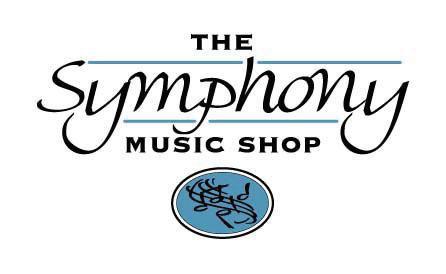

(Route 6) North Dartmouth, MA 02747
508-996-3301 www.symphonymusicshop.com

SUNDAY . DEC 15 . 3:30 & 7:00PM
BRONSPIEGEL AUDITORIUM, NEW BEDFORD HIGH SCHOOL
Yaniv Dinur, conductor and emcee
Appearances by the Southeastern Massachusetts Youth Orchestra and the Showstoppers
Troika from Lieutenant Kijé | Sergei Prokofiev
Rudolph the Red-Nosed Reindeer | Johnny Marks (arr. Richard Hayman)
Plappermäulchen Polka | Josef Strauss
Christmas on Broadway Medley (arr. John Higgins) Showstoppers
The Christmas Song | Mel Tormé (arr. Bob Lowden)
Champagne Polka* | Johann Strauss, II
Merry Carol of the Bells (arr. Jay Rouse & Randy Vader) Showstoppers
Winter Wonderland | Felix Bernard (arr. Ralph Hermann)
Perpetuum mobile | Johann Strauss II
Excerpts from Nutcracker: (Arabian Dance “Coffee”*, Chinese Dance “Tea”, Trepak Dance of the Reed Pipes*, Waltz of the Flowers | Pyotr Ilyich Tchaikovsky
Christmas a la Valse | Robert Wendel | SEMAYO
Christmas Sing-A-Long: Jingle All the Way Medley (arr. David T. Clydesdale) | Showstoppers, SEMAYO, and you!
*7:00 PM Concert Only
Please remember to turn off anything that beeps or glows. As a courtesy to the performers and your fellow concertgoers, no flash photography.
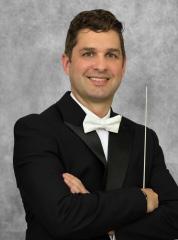
The Southeastern Massachusetts Youth Orchestras (SEMAYO), a program of the New Bedford Symphony Orchestra, was established in 2008 under the auspices of the NBSO. Today, there are more than 70 students in three ensembles under the SEMAYO umbrella-Symphony Orchestra, Debut Orchestra, and Preparatory String Ensemble.
SEMAYO is now led by Senior Conductor Spencer Aston. A native of Lake Orion, MI, Dr. Aston is the instructor of trumpet at Bridgewater State University where he leads the BSU Bear Band and teaches applied trumpet lessons as well as various music theory/history courses within the department. Prior to his appointment at BSU, he served on the faculties at UMass Boston, Boston University, and the University of New Mexico. Dr. Aston maintains a highly active performance schedule throughout New England and is an active adjudicator and clinician for competitions and educational ensembles.
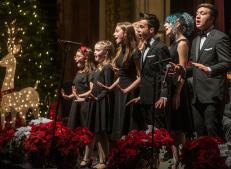
The Showstoppers is an inspiring group of local youths who make an impact on the community by providing quality musical entertainment to the elderly at nursing homes, assisted living programs, and senior centers throughout Southeastern Massachusetts. Under the direction of Kelly and Jillian Zucco, the troupe also performs for the community at large through a variety of public and private venues including fairs and festivals, charitable fundraisers, and other civic events. The troupe typically averages 40-50 shows per year, has won numerous talent and service awards, and has performed in Walt Disney World twice by invitation. We are ever so grateful to be performing with the esteemed NBSO once again this year!! For more information about the troupe, email showstoppersme@gmail.com or follow them on Facebook/showstopppers.us.
Let us help you entertain clients and reward your employees
NBSO’s diverse performances are creative and unique experiences where you can entertain clients, associates and their families. They are also a way to acknowledge and reward employees with special VIP treatment.
We are ready to customize a partnership level that best aligns with your company’s goals and interests.
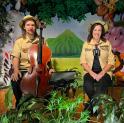

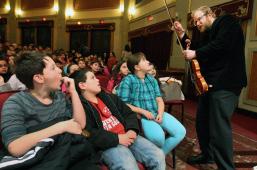
Business Partners help bring world-class musicians to the area and children the opportunity to take part in music education programs!
For more information, go to nbsymphony.org/become-a-sponsor or call 508.999.6276 x225. Thank

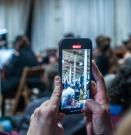











WE ARE SYMPHONY YOUR
SATURDAY, JANUARY 18, 2025, 7:30 PM
SUPER MARIO VS. ZELDA
Bronspiegel Auditorium, New Bedford High School
SATURDAY, FEBRUARY 15, 2025, 7:30 PM
LOVE AND ECSTASY
Bronspiegel Auditorium, New Bedford High School
FRIDAY, MARCH 14, 2025, 7:30 PM AND SATURDAY, MARCH 15, 2025, 7:30 PM
YANIV PLAYS BEETHOVEN
Fireman Performing Arts Center, Tabor Academy
Plus, watch for details on special events this spring
SYMPHONY ON TAP
An up close and personal concert experience, perfect for first-timers or those new to classical music.
SYMPHONY SOIREE
An annual gala to celebrate and support all that the NBSO accomplishes in the concert hall and in the community.
